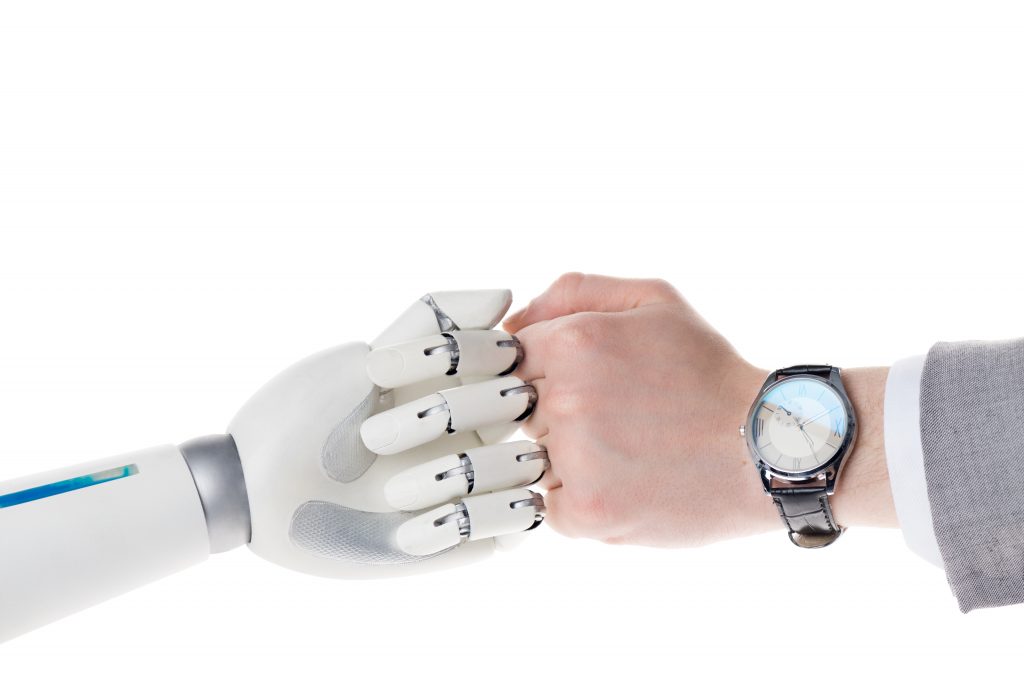“The right automation tools can provide application drafters with extra time that can be spent fleshing out additional details of the invention, exploring alternative embodiments, and telling a good story about how the invention solves a technical problem.”
 Patent application drafters are front-line participants to some of the most amazing innovations in the world today. A recent WIPO paper on Artificial Intelligence (AI) outlines how we are filing for patents on knowledge automation at an increasing rate. Our current tools, however, do not reflect the innovations with which we are so familiar.
Patent application drafters are front-line participants to some of the most amazing innovations in the world today. A recent WIPO paper on Artificial Intelligence (AI) outlines how we are filing for patents on knowledge automation at an increasing rate. Our current tools, however, do not reflect the innovations with which we are so familiar.
Historically—and to this day—the process of drafting a patent application has been a manual task. It is a task that takes, on average, 40 hours of a highly-skilled patent application drafter’s time. Anyone who has drafted any volume of patent applications for a client knows that the drafting process typically involves the use of boilerplate language and substantial copy and paste operations. While performing these repetitive tasks, we have all thought: “there must be a better way.” While we find ourselves surprised by the lack of tools to help with patent application drafting, we recognize the challenges that must be overcome. Different attorneys, firms, and clients often have different styles and preferences when it comes to the way patent applications are drafted. Thus, any automation tools would necessarily need to handle these different styles and preferences. But these challenges notwithstanding, the days of drafting a patent application completely manually by a single patent drafter are coming to an end.
New Challenges Require New Tools
Several market trends are forcing us to draft patents in a new way. The first and most dramatic trend that every patent attorney has experienced is a consistent downward pressure on fees. Receiving a phone call from a long-time client announcing that they are considering decreasing fees is becoming alarmingly common. At the same time, “patent quality” concerns have received national attention. As a result, more effort is required to ensure that patent applications contain the necessary content to survive a gauntlet of Section 101 and Patent Trial and Appeal Board challenges. Added to that, it is no longer unheard of to receive an invention disclosure where the due date for filing the application is . . . tomorrow! This leaves patent application drafters significantly constrained in their time and simultaneously pushed to provide higher quality. They are in the unenviable position of having to create more value with fewer resources.
This is not a historical first. Other industries have solved similar problems by improving efficiencies and automating the routine and mundane parts of their processes. Most famously, Toyota pioneered Lean Manufacturing in the 1930s and 40s. By getting “lean,” practitioners can eliminate wasted time and focus more effort on creating value. But what does automation mean for modern patent law? What is this next step? And is AI the cure-all for our dilemma?
We’ve all heard that “AI is the new Electricity.” According to the recent WIPO paper , there is likely no “industry which is not going to be transformed” by AI. The fact that we can ask Google or Alexa to serve us in a host of different ways lends some credibility to these headlines. One day, like Tony Stark in Iron Man, we might just have a conversation with “Jarvis” about an invention and then ask our helpful AI to “build it” into a patent application. But we find ourselves simultaneously enthralled and skeptical of this narrative. We wonder when? When will we begin to get some actual automated help with our patent work? The short answer to that question, is now. But that automation is not Jarvis just yet.
Already-Available Solutions
The current state of the art more closely resembles a suite of narrow task-specific tools than an all-knowing general AI. This “narrow” AI uses robotic process automation, machine learning, and other natural language processing tech to help the patent application drafter in his or her work. A good analogy is the Integrated Development Environment (IDE) used by software developers. An IDE enhances the user’s abilities in numerous small and specific ways. To identify what tools can be used to improve patent drafting, we need to take a close look at individual tasks to see what synergies we can create between human creativity (the fun part of being a lawyer) and document creation (where our computers can help).
Patent applications are commonly created in Microsoft Office, which might be considered our IDE. They have several well-defined parts: a claim set, a specification, drawings, an abstract, a problem and solution, and a summary. The generation of some of these parts can be automated with Microsoft Office “add-ins.” Based on a single claim set, for example, mirrored claims can be automatically generated that replicate a claim set into different statutory classes. Further, as most readers know, abstracts and summaries are often drafted to closely track the independent claim language. This task lends itself to Natural Language Processing (NLP). Further, process flowcharts can be readily generated from the claims. Even the flowchart description, including support for all the dependent claims, can be automatically generated. To be sure, if it involves boilerplate language or copying and pasting, it can be automated. All told, many hours can be cut from the drafting time for each patent application. And, as a bonus, the output is highly accurate, consistent, and can be matched to any attorney’s, firm’s, or client’s style and preference. That is, current automation tools can create highly accurate output and redirect several hours of copy, paste, and other simple text work to substantively improving a patent application.
More Time, Better Quality
In short, the right automation tools can provide application drafters with extra time — our most precious commodity. This extra time can now be spent fleshing out additional details of the invention, exploring alternative embodiments, and telling a good story about how the invention solves a technical problem. Rather than languish under the pressure of decreasing fixed fees and increasing quality demands, practitioners should at least investigate the different automation options available. When equipped with the tools best suited to their clients’ needs, patent application drafters can generate higher quality work and still get home in time for dinner. They can actually do more, with less.
Image Source: Deposit Photos
Image ID: 191578550
Copyright: VitalikRadko

![[IPWatchdog Logo]](https://ipwatchdog.com/wp-content/themes/IPWatchdog%20-%202023/assets/images/temp/logo-small@2x.png)

![[[Advertisement]]](https://ipwatchdog.com/wp-content/uploads/2023/01/2021-Patent-Practice-on-Demand-1.png)
![[Advertisement]](https://ipwatchdog.com/wp-content/uploads/2024/04/UnitedLex-May-2-2024-sidebar-700x500-1.jpg)
![[Advertisement]](https://ipwatchdog.com/wp-content/uploads/2024/04/Artificial-Intelligence-2024-REPLAY-sidebar-700x500-corrected.jpg)
![[Advertisement]](https://ipwatchdog.com/wp-content/uploads/2024/04/Patent-Litigation-Masters-2024-sidebar-700x500-1.jpg)

![[Advertisement]](https://ipwatchdog.com/wp-content/uploads/2021/12/WEBINAR-336-x-280-px.png)
![[Advertisement]](https://ipwatchdog.com/wp-content/uploads/2021/12/2021-Patent-Practice-on-Demand-recorded-Feb-2021-336-x-280.jpg)
![[Advertisement]](https://ipwatchdog.com/wp-content/uploads/2021/12/Ad-4-The-Invent-Patent-System™.png)






Join the Discussion
3 comments so far.
Steve
October 4, 2019 01:09 pm“Already-Available Solutions”: You describe Office add-ins that transform claims into other claim forms, abstracts and summaries, and flowcharts. Are you proposing that the reader build these for themselves, or has someone already done it? If the latter, who?
Concerned
September 27, 2019 10:23 amThat was catch 22, not your claim 22.
You have an invention, but you cannot have a patent.
Benny
September 26, 2019 02:52 pmOne day the USPTO will use AI to generate boilerplate office actions, too. Then there will be no more “claim 22 is rejected …” in response to an application with 17 claims (actually happened to us )